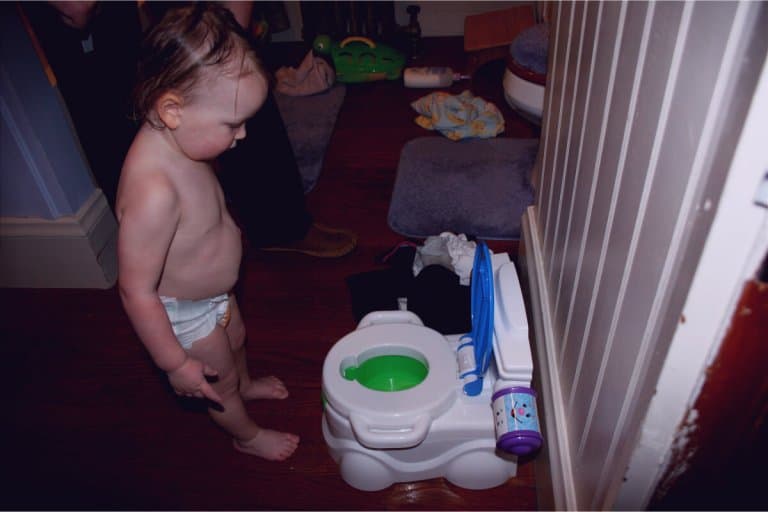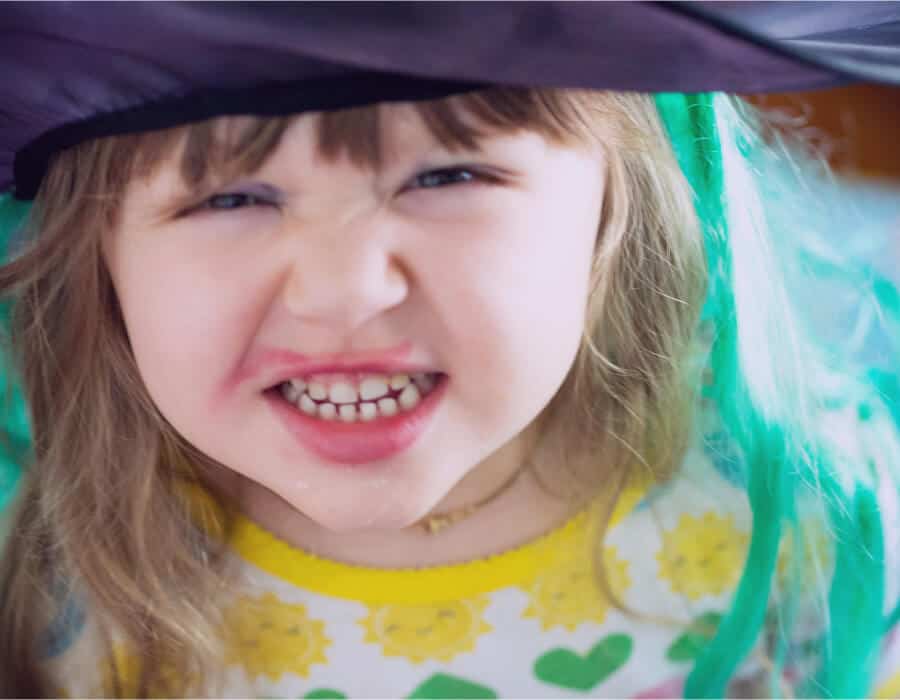How to Potty Train a Stubborn Toddler

How would you describe your toddler?
Opinionated? Spirited? Defiant? Stubborn?
Then comes the day we finally decide to forgo diapers. We’ve got the potty, we’ve got the wipes, we’ve read the blogs, we’ve got our game faces and we’ve got our form of encouragement (AKA bribing tools). The only one who’s not on board is our precious and stubborn toddler.
My Personal Potty Training Story
I knew my child had her opinions before going on this venture. I didn’t realize that stickers and endless praise wouldn’t be enough. I didn’t realize that she would purposely pee in her pants because she was mad. I didn’t realize that desperation in potty training is real.
Potty Training Bootcamp
We did the boot camp method where she went bottomless the first day or so. Then, she got underwear alone for a couple days before she got her pants. I firmly would correct her saying, “We don’t go pee pee here. We go pee pee in the potty.”

After only a few days, she was supposed to get the concept. In reality, she understood that mommy didn’t like her pool of pee pee so she chose to hide her pee.
She had accidents then ran to the potty. After seeing my grumbling face, she’d kiss my cheek and say, “I kiss you.” I still had to clean the floor and the drenched toys. Did anyone else have a similar situation?
Poop
Let’s talk poop. It only took dozens of tries for us. This was after her holding it for days. We tried to remedy this by feeding her an endless supply of berries and lentils. I was convinced that poop was going to fall out her bottom.
We waited until we saw the position. We grabbed her and ran her to the potty. Rolling turds are a thing! Luckily, my stubborn child liked pooping in the potty.
After about a month, frequent accidents dwindled. The next few months were a roller coaster of good weeks and learning to restrain myself weeks. After six months, I could safely say that she’s not going to college in diapers!
Through-out and after that time many friends would ask me how I did it. We’d share our funny yet not so funny stubborn child moments. We stored up all the things that worked and didn’t work.
The Potty Training To-Do List
-
Set yourself up for success
Start training months in advance. This could make all the difference.
Buy books about potty training and fun underwear. Show them how you go to the bathroom. Explain that they’re growing up and won’t wear diapers anymore.
I’ve even heard of moms who told their child that once these diapers run out, the diapers are done. Take your child to the bathroom, dump the solids in the toilet and say bye-bye as you flush it down. This sparks interest and expectation.
-
Start by making it a full time job
Dedicate a weekend to a week to that child. Whether or not you use pull-ups, it’s a good idea to take your child every hour to the potty. When they’re successful, you slowly extend the time. When there were accidents, we changed her clothes immediately. We wanted her used to the dry feel. At first, it felt like I was always in the bathroom or bent over wiping up the floor.
-
Practice, practice, practice
Before starting the training, have them practice what they will be doing. After an accident, practice what they could do next time they get that feeling. When they need to go to the bathroom, have them practice how they are going to signal that they need to go. The signal could be a hand motion or a short set of words.
-
Be consistent
My child likes to push boundaries. I could not tell her at one point to only pee in the potty or toilet and then be ok with her peeing in a pull-up. During waking hours, we wore underwear; during sleeping hours we wore a pull-up, just in case we didn’t make it to the potty. It quickly turned into, underwear during the day and pull-ups at night. This consistency kept things clear.
-
Reward for getting them to the potty and keeping them at the potty
We used chocolate to lure her in and a paper with stickers to keep her seated. There was always a dance and cheers at the end. This worked until it didn’t. Then, we tried to have specific potty toys in the bathroom.
That worked until it didn’t.
The one that did work was giving her time on a tablet only if she sat on the potty. We had to monitor her time on the potty because she always wanted to be there.
-
Hang out with potty trained toddlers and young children
There is some magic about kids seeing other kids doing something. A friend’s child saw my darling child sitting on the potty with her tablet. He pulled up his potty next to her. Even without the tablet, he had to go when he saw her on the potty.
-
Be firm
Sometimes there are accidents. A firm word is necessary so they know it’s not what’s supposed to happen. This is new to them, accidents happen. Then sometimes, our little ones do things on purpose. I recall a party where a person screamed across the room, “Someone just pooped on the front lawn!”
That someone was a potty training child too busy to stop playing.
Later on, that child continued this unfortunate practice. The adult training had the child help in the cleaning process and had them carry the soiled clothes as they walked back to the house. Her griping was fierce but that accident never happened again.
-
Make it important and make it fun
Your encouragement needs to be fun, but that’s not all I’m talking about. As a teacher, I would have to make sure that my lesson was either important to the students or fun. My students were not motivated to learn things if they weren’t one of these two things.
When talking about potty training, I had to make sure it was upbeat. When there was an accident, we would practice by going to different places around the house. I would say in a sing song voice, “Do we pee here? No!”
I would continue walking with my daughter to another location and do the same. We might do this a couple more times before we ended at the potty and the answer was a resounding, “YES! We pee in the potty!” This also was followed by clapping and cheering.
It worked! My daughter would teach other people the appropriate places to pee.
-
Know every toddler is different
This doesn’t seem like a to-do but it was for me. I would hear all these stories about other children and I thought I was a failure. The truth is that each child responds differently and likes different things. There are also good weeks and bad weeks with each child. There is no one-size-fits-all.
-
Know that regression happens
This also is something I wish I would have kept in mind. When people asked if my daughter was potty trained, eventually I said yes. Then, that week would be the one that she got the idea that peeing in her car seat was a cool thing. Keep moving forward.
Calling it Quits
Even with all the right planning and all your best creative effort, sometimes your stubborn child and you might need a potty break. Not a time to go to the potty, but a break from potty training.
Take into consideration your child’s health and your wellbeing. Take a break, prep your child again and dive in when they show interest again.







Leave a Reply